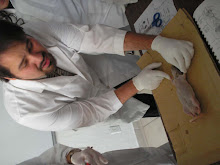This class we talked about a particularily interesting kind of animalia, and they were:
· Sponges
· Cnidaria
· Platyhelmynths
· Nematode
· Annelida
Sponges (porifera)
These are nothing like the sponges you see on TV. These are completely still and unmoving, in fact they have calcium in them, so that tells you just how still they are.you may ask yourself, how do they feed then? Well its very simple. They clean water. Water rushes through them and as it does the sponge…does what a sponge does. Absorbs the nutrients it needs.
That’s just one kind of sponge though. The other kind uses flagella. 0.0 This one is not so still. It uses the flagella and spins it in order to make a whirlpool, and force or actually suck the water in.
Cnidaria (jellyfish-anemone)
These have 2 layers of skin, the outside one is used for protection, and the inner one is used for digestion.
Now you may know them as “aguamalas” but those are just one of the different species of jellyfish. Cool thing about these is that they can reproduce both sexually and asexually, one generation does it sexually and the next asexually. This is called alternance of generations. Now about the burns of these,they are caused by “nematocistos”, which are like stingers activated by a nerve when it is stimulated. Even when it dies, the trap set up will still work. Which is cool.
Not much to say about anemone. They are the house of clownfish (nemo), but actually have toxins and other stuff to trap little fish. They are stuck on the ground but can move their tentacles in order to trap its prey.
Platyhelmynths (flat worms)
These are the first to have a cephalic region, which is considered a head, a group of nerve cells.
They also have bilateral symmetry, which means they have a left and a right and a top and bottom…although they poop through their mouth.
They are turbellarians, meaning they eat microalgae
These also happen to have blood
And finally, with these come the famous tapeworms (cestoda)
Nematoda (roundworms)
These are nonsegmented worms
They are parasytic, meaning they need a host to get their nutrients from and live, they also do elephantiasis, which means they get inside of you to get what they need. These have a separate mouth and anus, which is a relief for them I imagine.
Annelida (leeches)
The last but not least are the annelid, which are divided in three different groups:
Oigochaceae, hirudinea and polychaetae
Oigocahetae consists of earth worms
Hirunidea, my preferred kind, consist of leeches…woot!, which are obviously parasitic. They can only live in fresh water though
And finally come polychaetae, which are made up of lots of chaetae, duh. These are rings, used to make the worm advance and move by contracting and expanding over and over again.
Fernando Lopez Almada

No hay comentarios:
Publicar un comentario